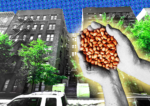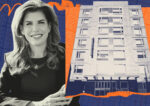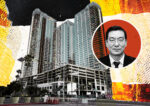Trending
Miami metro foreclosures continue rapid climb in first quarter, could curtail home price gains
Foreclosures in the Miami-Fort Lauderdale-Boynton Beach metropolitan area rose 37 percent in the first quarter compared to the same quarter in 2011, part of an upward trend that could dim recent gains in Miami’s residential pricing. There were a total of 25,883 properties with foreclosure filings in the first three months of this year, the second-highest total in the nation.
“We did expect some pretty significant increases in places like Miami because of the backlog of delayed foreclosures that was building up,” said Daren Blomquist, a spokesperson for foreclosure analysis firm RealtyTrac. “That is in line with what we were expecting in a market like Miami.”
While foreclosures have been climbing on a year-over-year basis for several months now, so have residential prices; but the latter is a trend that could be impacted as more distressed properties get processed.
A recent report from Douglas Elliman Florida shows Miami fragmented into two discrete markets — distressed and non-distressed.
The market share of distressed properties fell to 48.2 percent in the first quarter of 2012 from 64.7 percent in the first quarter of 2011, a development that came in large part due to the foreclosure freeze. It was that market shift that caused all price indicators in Miami to increase in the first quarter according to the Elliman report.
Data from the Miami Association of Realtors has also reported consistent gains in home prices in recent months, a number backed by positive growth in the latest Standard & Poor’s/Case-Shiller report released yesterday.
But those improvements could suffer a setback from the new surge in foreclosures, Blomquist said.
“I believe that the consequence of this whole pattern of the last year and half in Miami is that it’s going to take longer for the market to truly recover,” he said. “Miami did post an increase in home prices [in the Case-Shiller report], but the problem we have is as more foreclosures come on line and are sold, that’s going to stymie that home prices recovery we’ve seen because of the shortage of foreclosures.”
Although it’s hard to distinguish between homes that have price increases coming from natural appreciation as opposed to the absence of distressed properties on the market, the foreclosure freeze did have an impact, according to Douglas Elliman Florida CEO Vanessa Grout.
“The issue is that once the banks let go of a lot of this distressed inventory, you might see the proportion [of distressed sales] shift,” she told The Real Deal. “You might see more distressed inventory flooding the market, and you may see price declines.”
The number of new foreclosures may be limited, however. There was just one more foreclosure in the first quarter of 2012 in the Miami metro area than there were in the fourth quarter of 2011, the data indicate, suggesting a still-sizable foreclosure wave with a flatter curve.
“I think what that indicates is that we’re going to see foreclosures increase from the lows of last year, but there is still going to be a limit as to how many foreclosures the lenders and courts can handle in Florida,” Blomquist said.
Indeed, while it takes an average of 182 days to process a foreclosure even in hard-hit Arizona, it takes 861 in Florida’s system.
Nationally, foreclosure activity increased in 114 of the nation’s 212 metropolitan areas with a population of more than 200,000, according to RealtyTrac data. The Miami area, which saw one property with a foreclosure filing out of every 95 housing units in the first quarter of this year, ranked 13th in the country in that regard.




